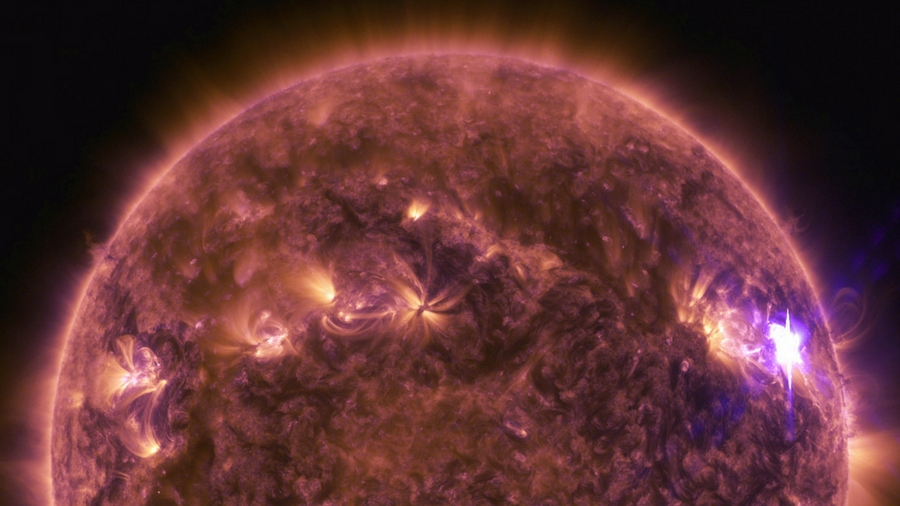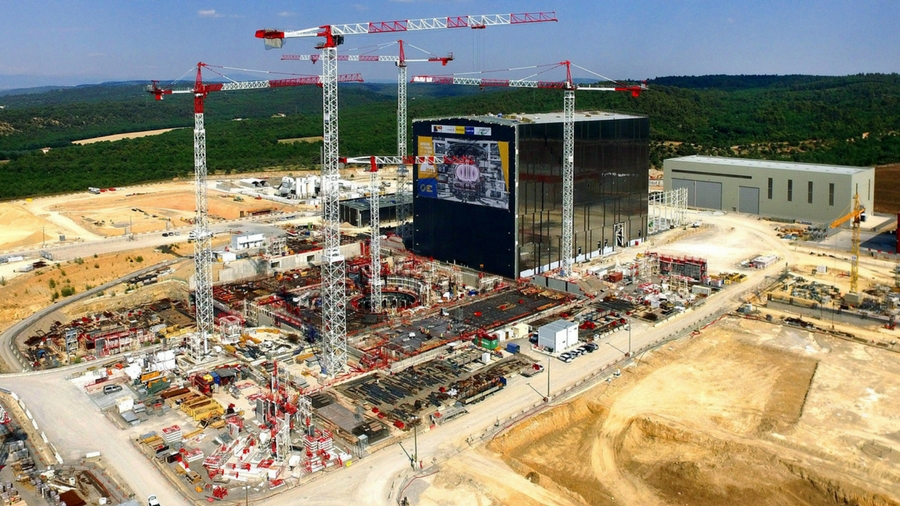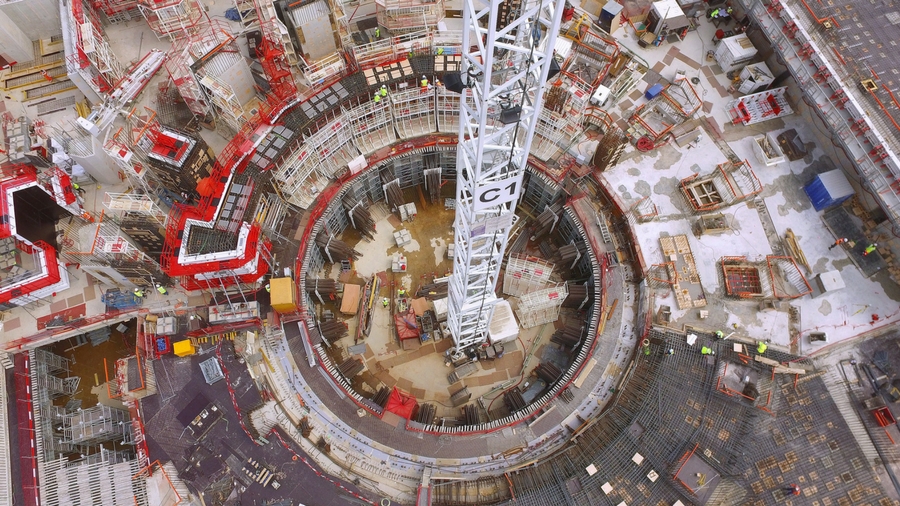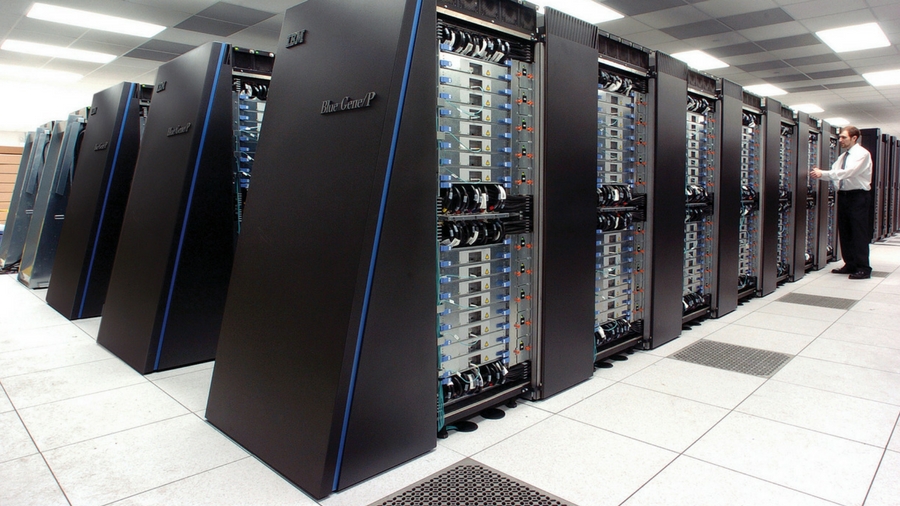Nuclear fusion: what's taking so long?
Why the era-defining carbon-free energy source of stars is taking its time

It could provide a cheap, safe, clean, abundant and reliable source of energy for mankind, but nuclear fusion has so far remained tantalisingly out of reach.
Despite being a theoretical replacement for both fossil fuel and nuclear fission energy production for over 60 years, nuclear fusion still hasn't become commercially possible in power stations. So what's taking so long?

What is nuclear fusion?
While in the nuclear reactors we've had since the 1950s atoms are split in half to produce energy, nuclear fusion sees the fusing of two hydrogen isotopes to produce a great deal more energy. You can see massive nuclear fusion reactors anytime you want, just by going outside on a sunny day, or at night, and looking up.
All stars – including the Sun – are natural nuclear fusion reactors, but the enormous forces of gravity are difficult to replicate down here on Earth.
Although fusion reactors have never gone beyond the experimental phase, researchers have achieved temperatures of around 100 million degrees. Trouble is, they've had to put more energy in than they've gotten out, making nuclear fusion – so far – a commercial non-starter.
Is nuclear fission dangerous?
Fossil fuels are warming our planet, and nuclear fission produces toxic radioactive waste.
Meanwhile, nuclear fusion reactors – which are either donut (Tokamak) or sphere-shaped containers of plasma (a cloud of protons, neutrons and electrons that's considered the 'fourth state' of matter) suspended by magnetic fields – produce low levels of radioactivity, they don't come with risk of meltdown, and their raw material isn't super-rare uranium. Instead, they use far more common deuterium and tritium.
Sign up for breaking news, reviews, opinion, top tech deals, and more.
Sadly, the core process that produces the energy is proving very difficult to tame.

The core problem
Producing controlled fusion power is tremendously difficult. The core problem vexing nuclear scientists is plasma physics. In a fusion reactor, the plasma needs to be heated to at least 100 million degrees and forced to collide using electromagnets.
Sadly, plasma is unstable and unpredictable, so the all-important collisions are difficult to force.
"We want the flow of plasma to be smooth, but unlike a regular gas, plasma obeys more complex laws," says Dr. James Lambert at Applied Fusion Systems in London.
"In a gas the interactions between particles are short range, and only collisions between particles have any effect … in a plasma all the particles are charged so they attract, repel and divert each other at long ranges, and simple collisions play no role."
The answer to the nuclear fusion riddle is to develop much more sophisticated computer models of plasma, so behaviour can be predicted and controlled. That's exactly what's going on now.
What's preventing the big breakthrough?
If nuclear fusion is theoretically possible, massively important and it's being researched all over the world, what's preventing the big breakthrough?
"Here's the thing – nothing," says Lambert. "Supercomputers are finally crunching numbers fast enough for us to test and validate designs quickly, and superconductors have gotten cheap and strong enough so that now we have all the pieces of the puzzle – now we need to put those pieces together," he says.
The big problem in that isn't actually fusion at all.
"There's a saying – fusion is easy, but plasma physics is hard," says Lambert. "But with the advent of cheap supercomputing we understand plasma physics better than ever."
That's exactly what's happened at the Plasma Science and Fusion Centre at the Massachusetts Institute of Technology (MIT), where researchers computer modelled the conditions inside a fusion reactor in an attempt to make the process self-sustaining. The task gobbled-up 15 million hours of computer processing time, which may explain why progress is so slow.
Major projects
The major nuclear fusion project in the world is the chronically delayed International Thermonuclear Experimental Reactor (ITER), a 35-year-long international research project in Saint Paul-lez-Durance, France that's funded by China, the EU, India, Japan, South Korea, Russia and the US.
A donut-shaped Tokamak magnetic fusion container, it's slated to begin experiments using plasma in 2025 – a decade later than originally planned – eventually aiming to produce 500 megawatts of energy from 50 megawatts of input.
However, its budget has already escalated from US$5 billion to US$20 billion.
"Tokamaks achieved higher temperatures early on, so researchers dropped their own projects and devoted their time to tokamaks," says Lambert.
"A major competing design, the stellarator, requires such a contorted design that they have only now become viable research projects." That's exactly what's going on at the Wendelstein 7-X stellarator at the Max Planck Institute for Plasma Physics (IPP) in Germany.

Funding fusion
Faced with such lumbering costs and suspected lack of progress, a wave of privately-funded fusion startups have appeared of late that rely on the very latest thinking – among them Canada's General Fusion, Tri Alpha Energy and Helion Energy in the US, and the UK's Applied Fusion Systems, Tokamak Energy and First Light Fusion – all trying to crack the critical science and make small nuclear fusion reactors.
"We have shorter lead times so we can apply new knowledge quickly and pivot towards better designs faster," says Lambert.
"The trouble with the big projects is that by the time they're built the knowledge that informed their design is obsolete."

Structural problems
For an industry to make a giant leap in its technology requires the kind of leadership and focus that the nuclear sector just does not have.
In the wake of the Fukushima incident in Japan in 2011, there is a wave of anti-nuclear public opinion, and the resulting internationally binding agreements around environmental quotas mean a lot of bureaucracy. None of this helps fusion's cause.
There's also a major staffing issue. "There is a chronic skills shortage in the nuclear industry," says Matthew Sykes, Head of Power & Nuclear at Spencer Ogden, which recruits for nuclear plants.
"Sourcing qualified, skilled candidates who also have nuclear security clearance is a challenge." Sykes adds that there's an ageing workforce, with many of the workers who have been filling positions in the sector now reaching the end of their careers.
Made in Britain?
"Nuclear is very high risk, it's slow moving, and there is lots of talk but very little go-ahead," says Sykes who partly blames the slow rate of progress on the international ownership of projects.
For example, the controversial Hinkley Point project in the UK is funded by French and Chinese interests. Despite that, it's the UK that's in pole position in the race to develop nuclear fusion reactors.
Massive projects in the USA and France notwithstanding, some think that it's the UK that's in the best position to make nuclear fusion a commercial reality. In fact, the largest tokamak in the world is at the Joint European Torus (JET) project at the Culham Centre for Fusion Energy in Oxfordshire, UK.
"Most British people are surprised when I tell them the UK leads the world in fusion research," says Lambert. "We're in the best possible position to lead the way to a new energy revolution."

Nuclear fusion in a decade?
When we physically get nuclear fusion power generation will mostly depend not on scientists, but on civil servants, who are not exactly known for their administrative speed and agility.
"Governments don't move fast when it comes to buying new power plants," says Lambert. "Look at Hinkley Point."
Even if it were a tried-and-tested technology by now, nuclear fusion's mass-adoption – and so, the solution to the world's looming energy crisis – would likely take decades. But nuclear fusion technology itself will be with us sooner than we think. "We'd like to see ground being broken in ten years," says Lambert about the first nuclear fusion-based power stations.
The world can and will wait for an inexhaustible source of clean, carbon-free energy, but it's not happening tomorrow. However, for a technology that has always been '20 years from now', perhaps just a decade-long wait is a half-life we should start getting excited about.

Jamie is a freelance tech, travel and space journalist based in the UK. He’s been writing regularly for Techradar since it was launched in 2008 and also writes regularly for Forbes, The Telegraph, the South China Morning Post, Sky & Telescope and the Sky At Night magazine as well as other Future titles T3, Digital Camera World, All About Space and Space.com. He also edits two of his own websites, TravGear.com and WhenIsTheNextEclipse.com that reflect his obsession with travel gear and solar eclipse travel. He is the author of A Stargazing Program For Beginners (Springer, 2015),